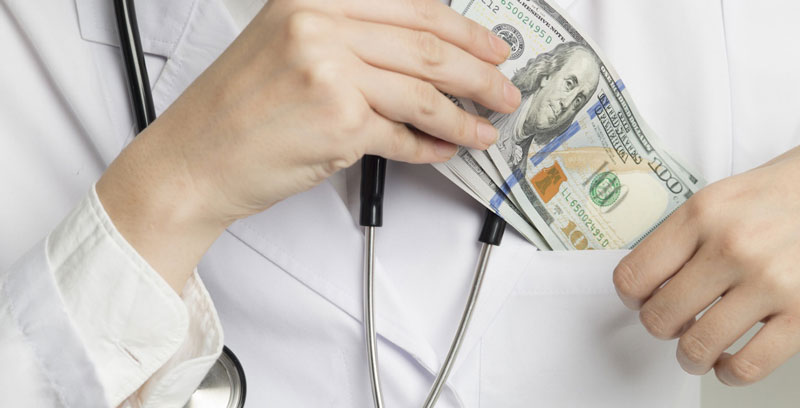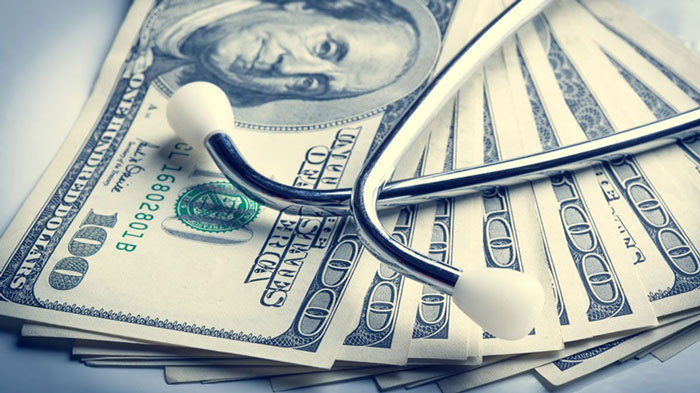Over 72 million individuals in 150 countries get medical devices and therapies from Medtronic (MDT), a multi-billion dollar global leader in medical technology. Medical electronics company Medtronic was founded in a Minneapolis garage by Earl Bakken, the inventor of the battery-powered pacemaker, and skilled engineer Palmer Hermundslie in the early 1960s.
It is expected that Medtronic will have an international presence by the year 2021, including locations in Europe and Asia and Africa, Latin America, and the Caribbean.
Medical technology company Medtronic expects to make more than $28 billion in revenue in 2020. It aims to invent appropriate therapies, resolve healthcare access disparities, and deliver value-based healthcare through its offerings.
Medtronic's report's four most important cardiovascular, vascular, minimally invasive, restorative, and diabetic divisions are the company's four most important. See how the business produces money by looking at each of these.
Medtronic's Financials
Medtronic announced net sales of $7.76 billion for the quarter ending January 29, 2021 (FY21 Q3), an increase of $128 million and $785 million over the prior quarter ended October 30, 2020. (FY21 Q2).
Although the company's net sales in the third quarter of FY21 were up just.7 percent from the same quarter a year earlier. Sales of minimally invasive therapies and diabetes treatments climbed, but revenues of therapeutic therapies, cardiac and vascular, declined by 5.9 percent and 0.8%, respectively, in the period. According to the business, the drop in medical procedures in locations that suffered second waves may be to blame for these slowdowns.
Cardiac and Vascular Segment

As of 2020, Medtronic's cardiovascular segment generated $10.47 billion in revenue, which decreased from $11.5 billion in revenue and $4.53 million in operating income for 2019.
Pacemakers and defibrillators are only two of the many products this category produces. Rhythm and heart failure, coronary and structural heart disease, and aortic and peripheral vascular disease are all included in this segment's subspecialties.
There is a big difference in price between a defibrillator and a regular pacemaker, with the latter running from $1,275 up to $2,875. Insurance or a medical provider are almost usually responsible for the payment.
The cryoballoon, another Medtronic heart device, freezes the heart tissue that causes erratic beats. Such equipment is costly for personal usage, but injecting one's cryoballoon is exceedingly unlikely for a patient with an intermittent pulse. Many people can be helped by the equipment sold to hospitals.
These additional devices would have seemed like science fiction to Medtronic's nineteenth-century founders. Devices that capture electrical activity during fainting and palpitations and heart valve replacement surgeries are included in this category of treatment. It's easy to overlook that modern medicine is just as remarkable as outer space travel.
Minimally Invasive Therapies Segment
This year's sales for Medtronic's minimally invasive therapies segment were $8.35 billion, down from $8.47 billion in 2019 revenue and $3.26 billion in operating income.
Two sub-divisions are included in this section. The first is devoted to less-revolutionary but necessary tools, such as staples, mesh, and bronchoscopes, which are flexible instruments that can be inserted through the nose to examine the lungs.
In addition to ventilators and resuscitation bags, the company's patient monitoring and recovery business also fall under the minimally invasive therapies section. Curity is a Medtronic brand that manufactures gauze and bandages as a last point of reference.
Restorative Therapies Segment
Despite Medtronic's best efforts, the company's Restorative Therapies segment generated $7.73 billion in revenue and $2.92 billion in operating income in 2020, down from $8.18 billion and $3.32 billion in 2019.
Spine and neuromodulation are subspecialties, as are neurovascular and surgery. In this division, the therapies range from the most conservative to the most radical in terms of their level of invasiveness.
In addition to interbody spacers, the American Academy of Orthopedic Surgeons has issued a statement saying, "By removing the bone and retracting the nerves, your surgeon can get to your spine and perform the procedure. An additional spacer can be added after removing the disk's back and inserting a new one." Simple as changing your oil.
Medtronic's cervical implants are also available for the lower back and the thoracic portion of the spine.
Degenerative disc disease necessitates bone grafts, which are a medical need. Even though Medtronic is one of the world's most recognizable brands, no one thinks of them as a commodity. Specifically, Medtronic's most common bone graft uses a protein that encourages development in the spine, jaw, and face in specific areas.
Deep brain stimulation, a method of halting the progression of Alzheimer's disease, is one of the company's other restorative therapy offerings. The FDA gives a humanitarian device exemption for deep brain stimulation, even though it's already widely used in other countries. However, the FDA's regulatory approval process has hampered the adoption of this innovation in the U.S. Blades for tissue dissection, and coils injected to treat ailments are two more space-age discoveries in restorative therapy.
Diabetes Segment
Lastly, Medtronic's diabetes group generated $2.37 billion in revenue in 2020, a slight decline from the $2.39 billion in revenue that Medtronic had in 2019.
6 While revenue grew from 2019 to 2020, operating income fell by 8%, from $739m to $546m. 10 In response to the rapid growth of one of the world's most prevalent diseases, Medtronic is putting its money where its mouth is and developing an insulin pump that constantly monitors a patient's blood glucose levels.
It wasn't that long ago that the typical diabetic had to rely on the hope that the insulin they were injecting would do its job rather than track and store data. Modern insulin delivery systems provide insulin and stop it when blood glucose levels return to normal. The system isn't cheap, but it's a good deal for people with diabetes who are willing to spend the money. Compared to its professional-grade counterparts, the MiniMed 630G is nearly primitive in its capabilities.
Overseas Tax Advantages

Medtronic shifted its legal headquarters to Dublin, Ireland, in 2014, an Irish medical products business, to avoid a ten-figure tax bill in Minnesota.
Formed as a separate legal entity, Medtronic plc was renamed Medtronic plc following Medtronic's acquisition by Abbott Laboratories in 2012.
At face value, the move was a natural consequence of the acquisition. Still, Medtronic was also able to take advantage of more benevolent tax regulations through a strategy known as corporate inversion.
Keeping profits outside of the United States to avoid paying taxes has recently sparked a lot of discussion in Congress about the country's corporate tax structure. As a result, Medtronic can now use an additional quarter of every dollar it earns as an Irish company.




